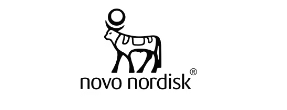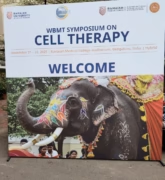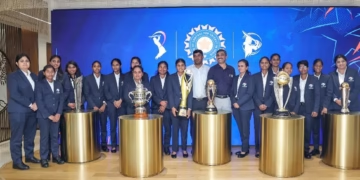- Data in children aged 6-11 further suggest Dupixent has potential to be best-in-class treatment option
- Dupixent significantly reduced severe asthma attacks by up to 65% over one year compared to placebo
- Significant and rapid improvement in lung function seen within two weeks and sustained for up to 52 weeks
- Results further support well-established safety profile of Dupixent
- U.S. and E.U. regulatory submissions for children aged 6-11 years planned by Q1 2021
PARIS and TARRYTOWN, N.Y. – October 13, 2020 – A pivotal Phase 3 trial of Dupixent® (dupilumab) met its primary and all key secondary endpoints in children aged 6 to 11 years with uncontrolled moderate-to-severe asthma. In a broad type 2 inflammatory asthma patient population, defined as having elevated eosinophils (EOS) or elevated fractional exhaled nitric oxide (FeNO), Dupixent added to standard of care significantly reduced asthma attacks (exacerbations) and improved lung function, as early as two weeks after the first dose, compared to standard of care alone. More than 90% of children in the trial had at least one concurrent type 2 inflammatory condition including atopic dermatitis and eosinophilic esophagitis. Safety results from the clinical trial were generally consistent with the known safety profile of Dupixent in patients aged 12 years and older with moderate-to-severe asthma.
“Children with uncontrolled moderate-to-severe asthma often struggle to breathe, largely because of their impaired lung function, and this can have a serious impact on their quality of life. It not only reduces their ability to participate in day-to-day activities, but can also take a huge emotional toll on the child and their family,” said John Reed, M.D., Ph.D., Global Head of Research and Development at Sanofi. “Dupixent is the only biologic shown in a controlled Phase 3 trial to improve lung function in children, which is generally consistent with results seen in the adolescent and adult trials. These positive data are especially encouraging for younger children who are struggling to manage their uncontrolled asthma.”
Despite standard-of-care therapy such as inhaled corticosteroids (ICS), children with uncontrolled moderate-to-severe asthma continue to experience symptoms such as coughing, wheezing, and difficulty breathing, and are at risk of severe asthma attacks.
For these children, this often leads to frequent hospitalizations and emergency room visits requiring use of systemic corticosteroids which can carry significant risks when used long-term. Uncontrolled asthma can cause children to miss school, and can interfere with physical activity and routine tasks including walking up stairs and playing sports. In the U.S., there are approximately 75,000 children 6-11 years old with uncontrolled moderate-to-severe asthma, and many more of these children worldwide.
“Children with moderate-to-severe asthma live with a heavy and unpredictable disease burden. Even while taking maximum treatments including inhaled corticosteroids, they suffer from multiple asthma attacks each year that may require hospitalization,” said George D. Yancopoulos, M.D., Ph.D., President and Chief Scientific Officer of Regeneron. “These impressive Phase 3 data in children with asthma show Dupixent significantly reduced annual severe asthma attacks and also improved lung function consistently across patients with markers of type 2 inflammation.”
The primary endpoint assessed the annualized rate of severe asthma attacks in two primary pre-specified populations: patients with baseline blood EOS ≥300 cells/μl and patients with markers of type 2 inflammation (FeNO ≥20 ppb or EOS ≥150 cells/μl). Across these two patient groups respectively, those who added Dupixent (100 mg or 200 mg every two weeks, based on weight) to standard of care experienced:
- Reduced rate of severe asthma attacks, with a 65% (p<0.0001) and 59% (p<0.0001) average reduction over one year compared to placebo (0.24 and 0.31 events per year for Dupixent vs. 0.67 and 0.75 for placebo, respectively)
- Improved lung function at 12 weeks compared to baseline by 10.15 and 10.53 percentage points for Dupixent vs. 4.83 and 5.32 percentage points for placebo (least squares mean difference for Dupixent vs. placebo of 5.3 and 5.2 percentage points, p=0.0036 and p=0.0009), respectively, as measured by percent predicted FEV1 (FEV1pp). FEV1pp is a common endpoint in pediatric asthma trials to evaluate a patient’s change in lung function compared to their predicted lung function based on a number of factors including age, height and sex, to account for children’s growing lung capacity at different stages of development. This clinically meaningful improvement in lung function was observed as early as two weeks and was sustained for up to 52 weeks.
The safety results from the trial were generally consistent with the known safety profile of Dupixent in patients aged 12 years and older with moderate-to-severe asthma. Over one year, overall rates of adverse events were 83% for Dupixent and 80% for placebo. Adverse events that were most commonly observed with Dupixent versus placebo included injection site reactions (18% for Dupixent and 13% for placebo), viral upper respiratory tract infections (12% for Dupixent and 10% for placebo), and eosinophilia (6% for Dupixent and 1% for placebo).
Dupixent is a fully-human monoclonal antibody that inhibits the signaling of the interleukin-4 (IL-4) and interleukin-13 (IL-13) proteins. Data from Dupixent clinical trials have shown that IL-4 and IL-13 are key drivers of the type 2 inflammation that plays a major role in asthma, chronic rhinosinusitis with nasal polyposis (CRSwNP), atopic dermatitis and eosinophilic esophagitis.













































